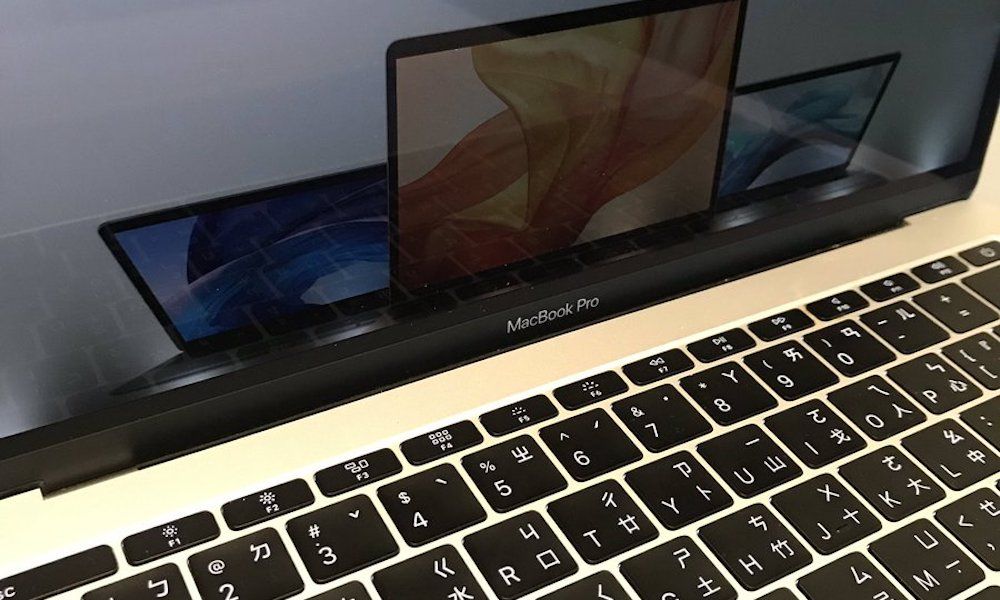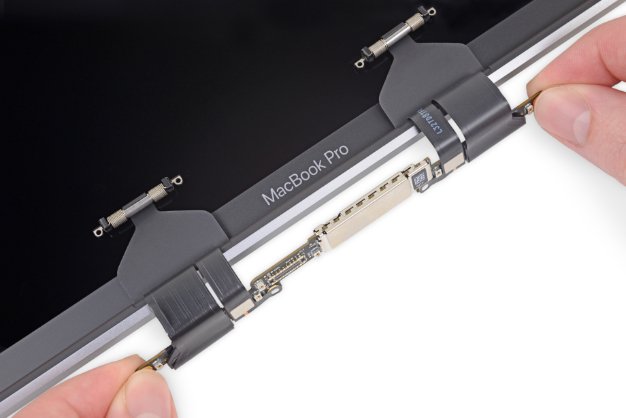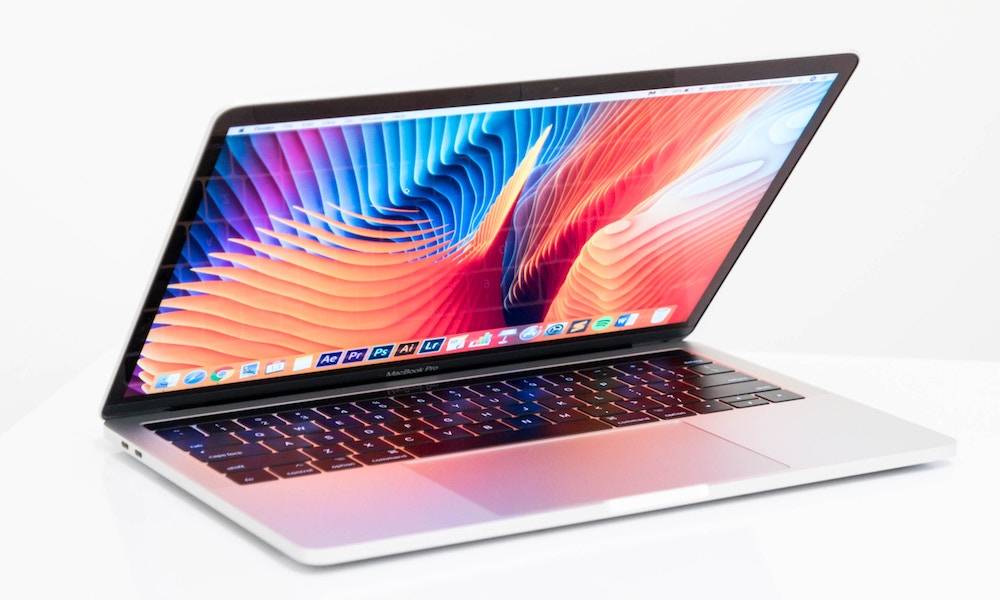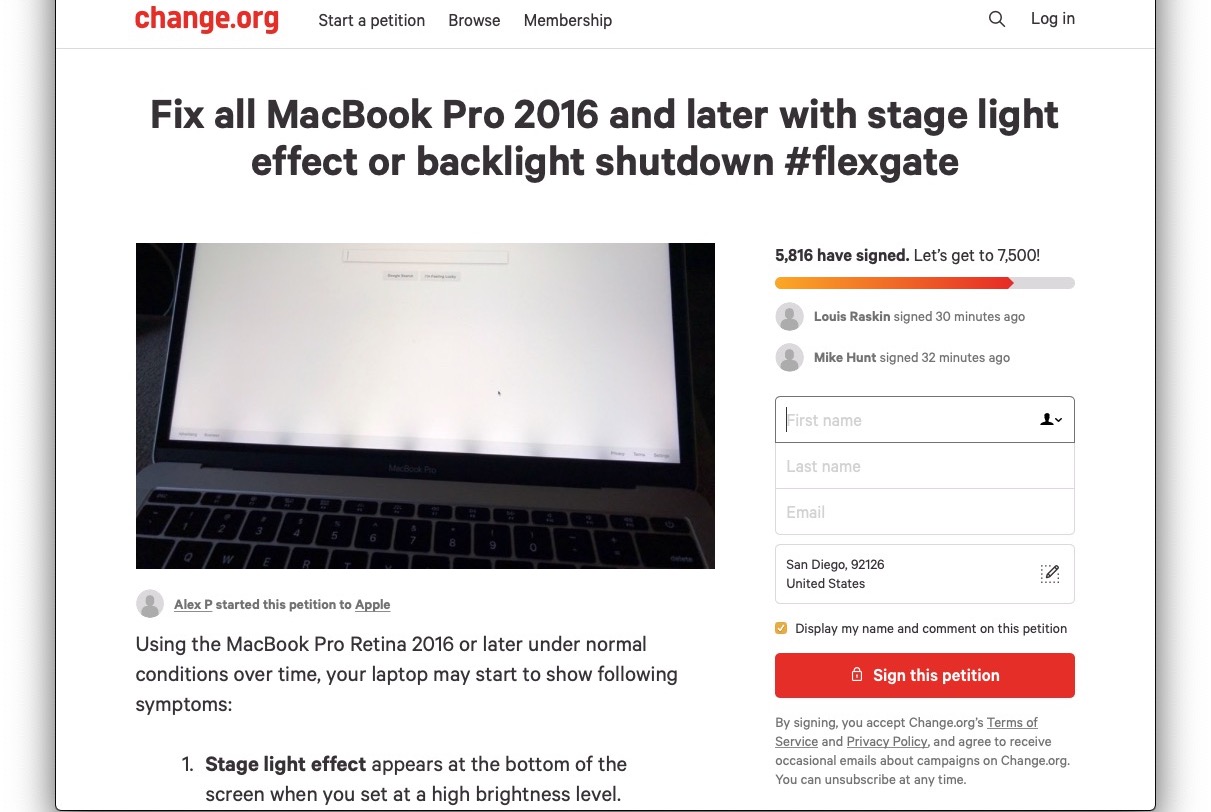MacBook Pro’s Latest Issue: 5 Things to Know About ‘Flexgate’
 Credit: Twitter / Riccphoto
Credit: Twitter / Riccphoto
The MacBook Pro is a stunningly thin notebook, especially when you consider just how capable and powerful it is. But Apple’s pursuit of thinness may be having unintended consequences for users.
Newer MacBook Pro models have previously been affected by a few hardware-based issues, which many attribute to their thin form factor. And now, reports of a new problem have surfaced. It’s called
Symptoms of Flexgate
MacBook Pro models impacted by the “Flexgate” issue experience a number of significant problems related to the display’s backlight, according to user reports and a diagnostic teardown by iFixit.
Most notably, users report a strange, warped “stage light” effect at the bottom of the MacBook Pro’s display when it’s set to high brightness. This seems to be the most common symptom.
In some cases, other users report that the backlight on their MacBook Pro devices can simply shutdown if the lid is opened above a certain angle. According to iFixit, this can occur is the lid is opened more than around 40°.
What Causes Flexgate
Basically, it comes down to cables. iFixit notes that, in newer versions of the MacBook Pro with Touch Bar, Apple opted to change the type of cable it used to connect the display to the display controller board.
Specifically, new MacBook Pro models use a thin “flex cable” to connect these two components. Reportedly, this cable is prone to stress and fracturing when the MacBook Pro’s lid is opened and closed repeatedly — which is, of course, a normal and intended function of a laptop.
Previous MacBook Pro models used more durable wire cables that actually could be routed through the display hinge. According to iFixit, that helped to “mitigate the stress of repeated openings and closings.”
How Many People Are Affected
According to iFixit, the thin flex cables are used in 2016 and newer MacBook Pro models. It isn’t readily clear how many MacBook Pro models are impacted, but the problem does appear to be fairly widespread.
That indicates that the flex cables could be a hardware flaw that surfaced as MacBook Pro models aged. There is even a website dedicated to “Flexgate,” suggesting that enough users have experienced it to warrant concern.
iFixit notes that the issue only impacts “Touch Bar generation” MacBook Pro models, but the teardown site didn’t make it clear whether newer MacBook Pro without Touch Bar could be affected too.
Repair Problems
Reportedly, iFixit reports that the flex cables are actually integrated into the display. Because of that, they cannot be swapped out individually. Instead, the entire MacBook Pro display unit needs to be replaced when the flex cables are damaged.
It’s also worth noting that the issue takes time to manifest, since it’s caused by repeatedly opening and closing the lid over a long period. Because of that, many affected MacBook Pro models will be outside of the standard one-year warranty.
Both of these factors lead to a fairly hefty out-of-pocket repair cost for affected users. Some users indicate repair costs of more than $600. While some users have successfully had Apple cover the costs, others report needing to pay it in full.
There Isn’t a Repair Program (Yet)
Currently, Apple has not launched a public-facing repair program to cover the costs of impacted MacBook Pro models. Though, based on how widespread it is and the fact that it could be a hardware-based design flaw, it’s likely that Apple could do so sometime in the future.
Because of the number of reports, it’s likely that Apple is aware of the problem. Similarly, there is also a Change.org petition urging Apple to launch an extended warranty program to fix impacted models. As of the writing of this article, the petition has nearly 6,000 signees.
In the meantime, it’s probably best that users argue against paying the repair costs out-of-pocket. Though if Apple does launch a repair program, it’s possible that the company could reimburse users who already paid the repair fees.





